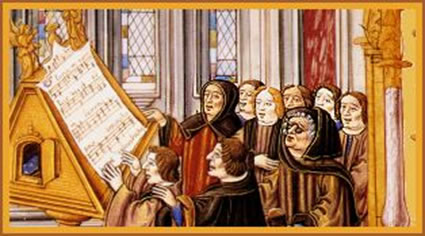|
Equali
An equale or aequale (from lat, voces aequales, equal voices or parts) is a musical idiom. It is a piece for equal voices or instruments. In the 18th century the equale became established as a generic term for short, chordal pieces for trombone choirs, usually quartets or trio (music), trios. The instruments were not necessarily equal in pitch, but formed a closed consort. Commemoration of the dead Aequales were conventionally used in Austria to commemorate the dead. They were tower music, performed from towers on All Souls' Day (2 November), and on the previous evening. They were also performed at funerals. While aequales might be played by other instruments, the sound of trombones was thought to be especially solemn and noble. Trombones had also already acquired Sackbut#Symbolism, an association with death and the afterlife. Finally, the theological symbolism of the trombone, representing divine presence, the voice of the angels, and the instrument of judgment, was thereby un ... [...More Info...] [...Related Items...] OR: [Wikipedia] [Google] [Baidu] |
Drei Equale Für Vier Posaunen
The Three Equals for four trombones, WoO 30 (''German'': Drei Equale für vier Posaunen), are three short equals for trombones by Ludwig van Beethoven. They were commissioned in the autumn of 1812 by the Stadtkapellmeister of Linz, Franz Xaver Glöggl, for performance as tower music on All Souls' Day. They were first performed at the Old Cathedral, Linz on 2 November 1812. Two of the equals (nos. 1 & 3) were performed at Beethoven's funeral on 29 March 1827, both by a trombone quartet and also in vocal arrangements by Ignaz Seyfried. The arrangements of Nos. 1 and 3 by Seyfried are settings for men's voices of two verses from the ' Miserere'. These were sung at the funeral, alternating with the trombones. The remaining Equal, no. 2 (again arranged by Seyfried for male voice choir) was sung at the dedication of Beethoven's gravestone on the first anniversary of his death in March 1828. A clean manuscript copy, checked by Beethoven, was made of the original manuscript as part ... [...More Info...] [...Related Items...] OR: [Wikipedia] [Google] [Baidu] |

